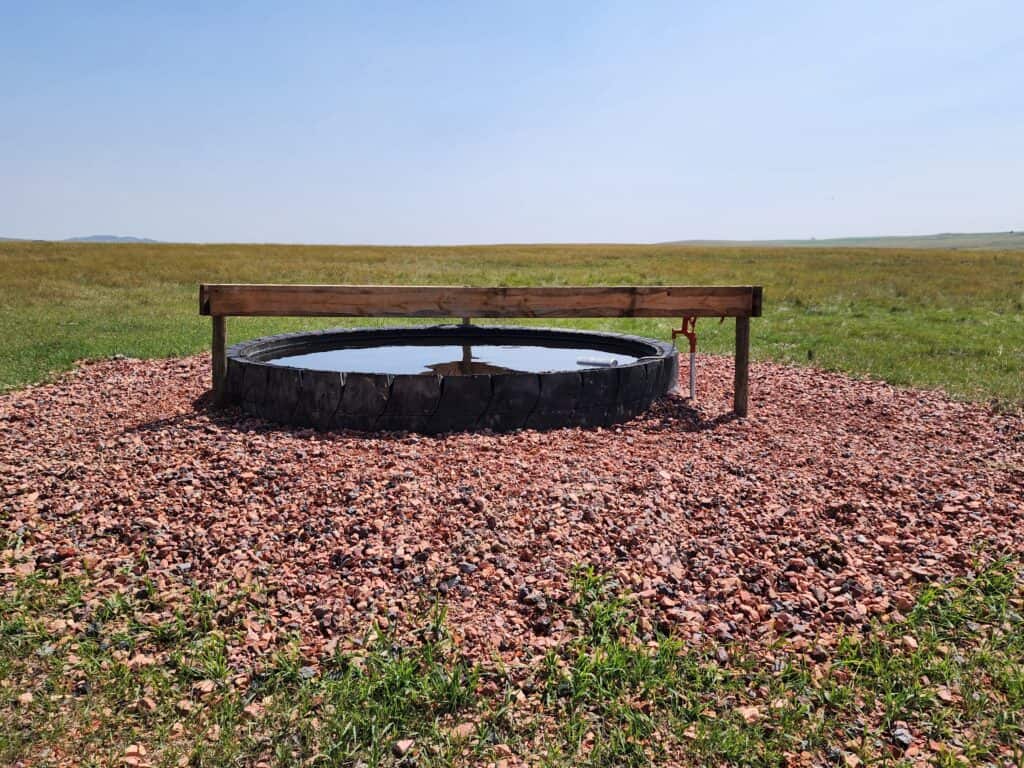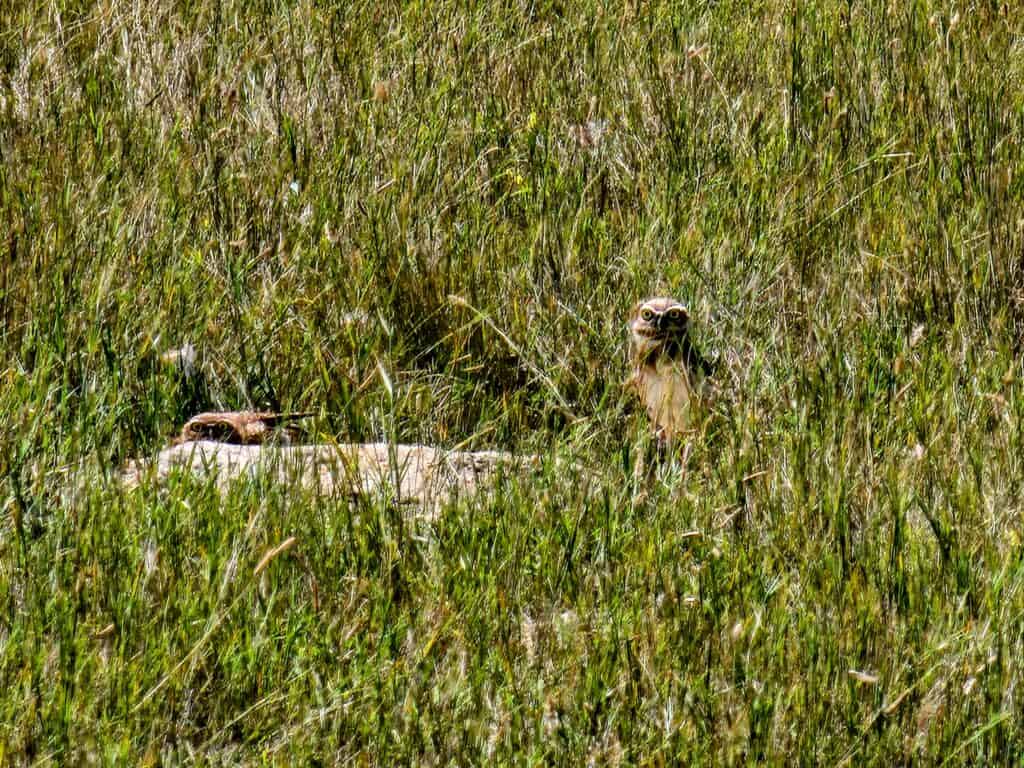Southwestern North Dakota is a region unknown to many. Ask a passerby what the landscape looks like and you will get a variety of answers. Some of the responses may include dry, flat, grassy, badlands, open, rolling hills, or ‘I have no idea’. A hidden gem in this unknown area is the Stewart Lake National Wildlife Refuge. This unique property includes a shallow wetland complex, historical site, and views of the highest and second highest points in North Dakota: White Butte and Black Butte. The refuge has 125 recorded bird species through eBird, including four of the NGPJV’s top five priority bird species and sightings of thirteen additional NGPJV priority bird species. This 2,230-acre refuge in Slope County was established by Franklin D. Roosevelt in 1941 for the benefit of migratory birds and other wildlife. The complex includes roughly 630 acres owned by the U.S. Fish and Wildlife Service and an additional 1,600 acres of easement refuge on privately owned land.
Management of these vital grassland landscapes in the Great Plains often includes partnerships with ranchers. Cattle grazing is a common practice to reduce excessive litter buildup, stimulate new grass growth, and suppress invasive cool season grasses, setting the stage for a diversity of grasses and forbs. Just how do you set the stage for diversity? In its most simple form, the process is very similar to gardening potted plants. A seed is planted underneath the soil surface, given water and fertilizer, and then placed in the sun. Over time, with water and care, those seeds grow and produce desired vegetables or elegant blooms. Without care and weeding, undesirable seeds would establish and compete with the planted seeds. Grazing animals, such as cattle, are the gardeners of our prairie ecosystems. Each step increases the opportunity for seeds from the previous year to be pressed into the soil and hoof-sized depressions are created across the landscape, holding water when it rains. The inevitable natural flow of fertilizer (manure and urine) provides nutrients for those seeds to grow.

Wildlife managers and biologists are working with livestock producers to bring diversity back to our grasslands by utilizing rotational grazing techniques. Cross fencing allows a small portion of grassland to have grazing activity while the remainder of the property is resting and building root structure. The outcome over time is a diverse landscape with variable stages of growth and recovery. Installation of water sources provides land managers with an enhanced ability to manage specific areas and reduce activity around natural water sources.
Kevin Thompson, a local rancher, partnered with NGPJV, Ducks Unlimited, Audubon Great Plains, and the U.S. Fish and Wildlife Service Audubon Wetland Management District to enhance grazing infrastructure on the refuge and his adjacent private land. The project began with a Ducks Unlimited grant – the “Grasslands Enhancement Project Phase II” funded by the North Dakota Outdoor Heritage Fund – and established a water well, solar system, water tanks, and rotational grazing system. Audubon Great Plains assisted Thompson with water infrastructure improvements, native grass planting, and initial perimeter fencing on his land through the Conservation Forage Program, also funded through the Outdoor Heritage Fund. Both projects set the stage for enhanced grassland management, and Thompson has already seen a significant reduction in the time his cattle are spending at natural water sources. “This has been and will continue to be an exciting project to enhance our grasslands,” he said.

Through a Northern Grassland Restoration Incentive Program (N-GRIP) agreement with NGPJV, Thompson is now making his cross-fencing invisible. A once-dreamed-about idea by many ranchers has recently become a reality. The N-GRIP project’s assistance with virtual livestock collars, native grass seed, and boundary fencing provided the opportunity to implement virtual fence technology through Corral Technologies’ virtual fence collar system. According to Thompson, “the virtual fence will make a new wave of rotational grazing possible without intense fence movement, and we look forward to its full implementation in 2024.”
The collars operate utilizing animal behavioral response to sound and sensation to establish a range of deterrence. Virtual fence boundaries are created on a phone or computer and provide the flexibility to keep livestock in or out of a specified area without physically moving fence. Frequent updates to your livestock’s location, notifications when cattle are out, grazing heat maps to correlate vegetative response to grazing pressure, and appeal to the next generation are just some of the opportunities that lie ahead. Cell service is required to upload information from the collars to a phone, but service is not required for the collars to operate. Corral Technologies’ system will effectively segment large pastures down to 50 acres, and built-in solar panels lengthen the battery life of the collar. Thompson concluded, “this project would not have been possible without the vision and focus of the U.S. Fish and Wildlife Service, Ducks Unlimited, NGPJV, Audubon Great Plains, and the North Dakota Outdoor Heritage Fund all cooperating.” The future is bright!


